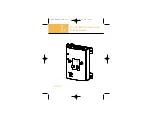
getMode()
Catalog >
If you save the settings with
getMode(0)
→
var
, you can use
setMode(
var
)
in a function
or program to temporarily restore the
settings within the execution of the
function or program only. See
setMode()
,
Mode
Name
Mode
Integer
Setting Integers
Display
Digits
1
1
=Float,
2
=Float1,
3
=Float2,
4
=Float3,
5
=Float4,
6
=Float5,
7
=Float6,
8
=Float7,
9
=Float8,
10
=Float9,
11
=Float10,
12
=Float11,
13
=Float12,
14
=Fix0,
15
=Fix1,
16
=Fix2,
17
=Fix3,
18
=Fix4,
19
=Fix5,
20
=Fix6,
21
=Fix7,
22
=Fix8,
23
=Fix9,
24
=Fix10,
25
=Fix11,
26
=Fix12
Angle
2
1
=Radian,
2
=Degree,
3
=Gradian
Exponential
Format
3
1
=Normal,
2
=Scientific,
3
=Engineering
Real or
Complex
4
1
=Real,
2
=Rectangular,
3
=Polar
Auto or
Approx.
5
1
=Auto,
2
=Approximate,
3
=Exact
Vector
Format
6
1
=Rectangular,
2
=Cylindrical,
3
=Spherical
Base
7
1
=Decimal,
2
=Hex,
3
=Binary
Unit
system
8
1
=SI,
2
=Eng/US
getNum()
Catalog >
getNum(
Expr1
)
⇒
expression
Transforms the argument into an
expression having a reduced common
denominator, and then returns its
numerator.
GetStr
Hub Menu
GetStr
[
promptString
,
]
var
[
,
statusVar
]
GetStr
[
promptString
,
]
func
(
arg1
,
...argn
)
For examples, see
Get
.
Alphabetical Listing
83
Summary of Contents for TI-Nspire CAS
Page 4: ...4 Service and Warranty Information 249 Index 251 ...
Page 248: ...248 ...
Page 250: ...250 ...
















































